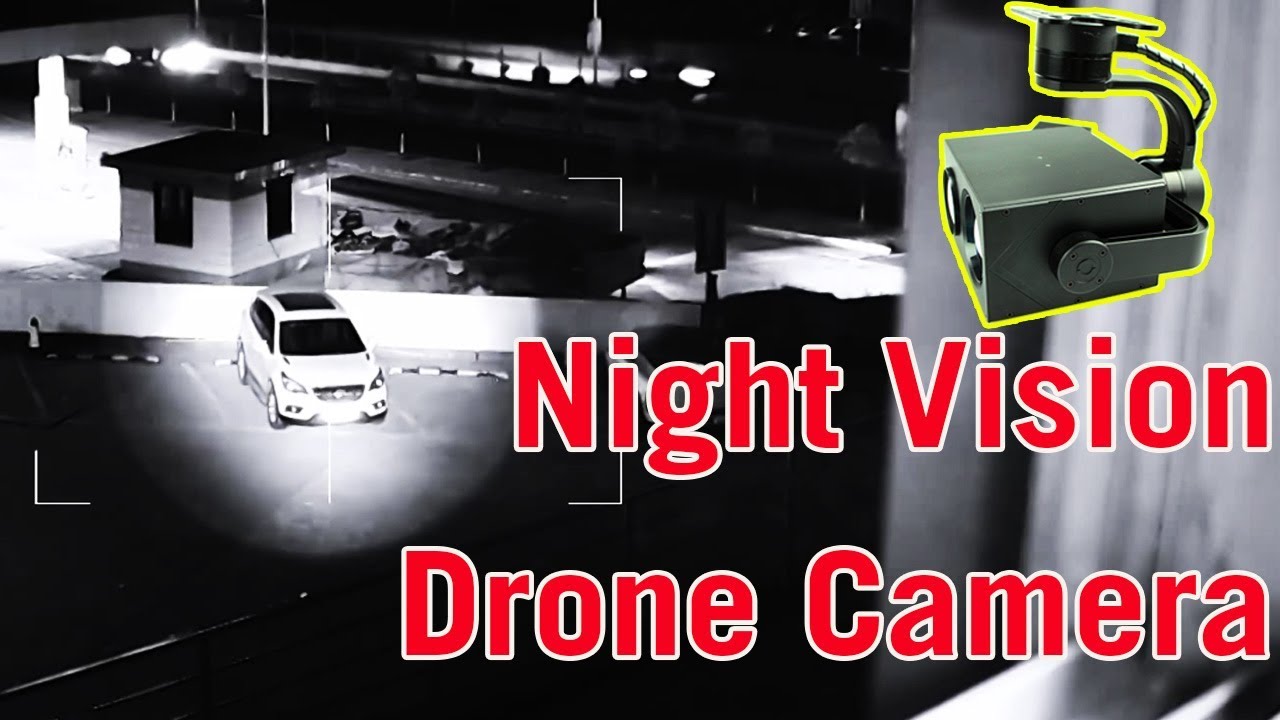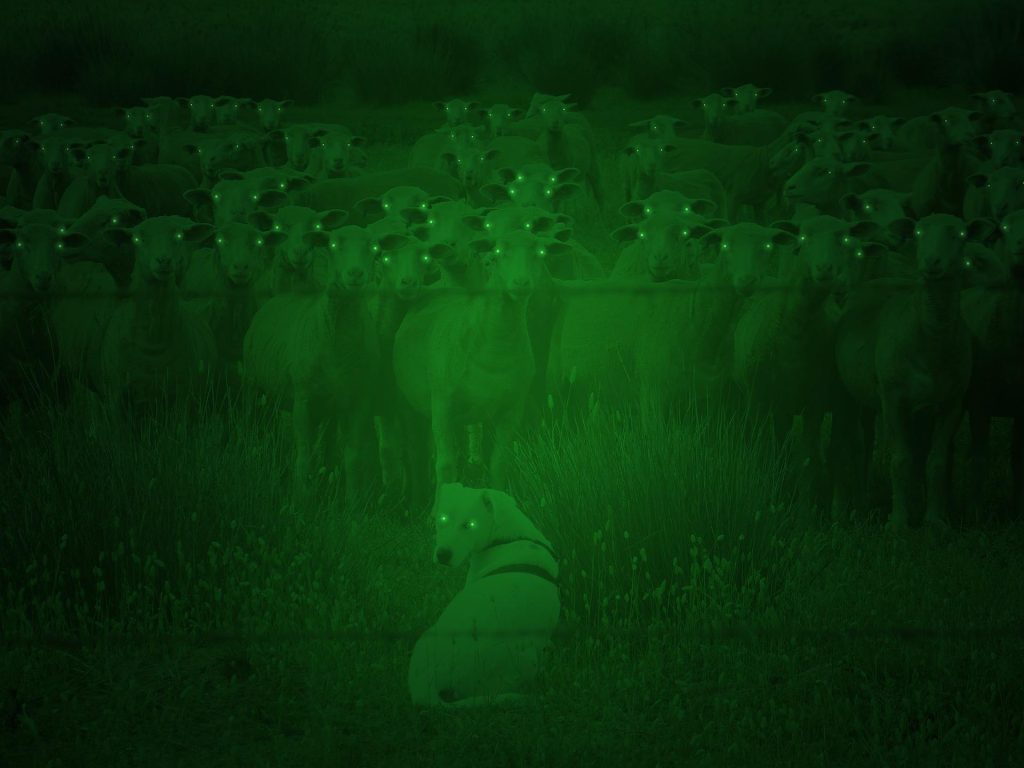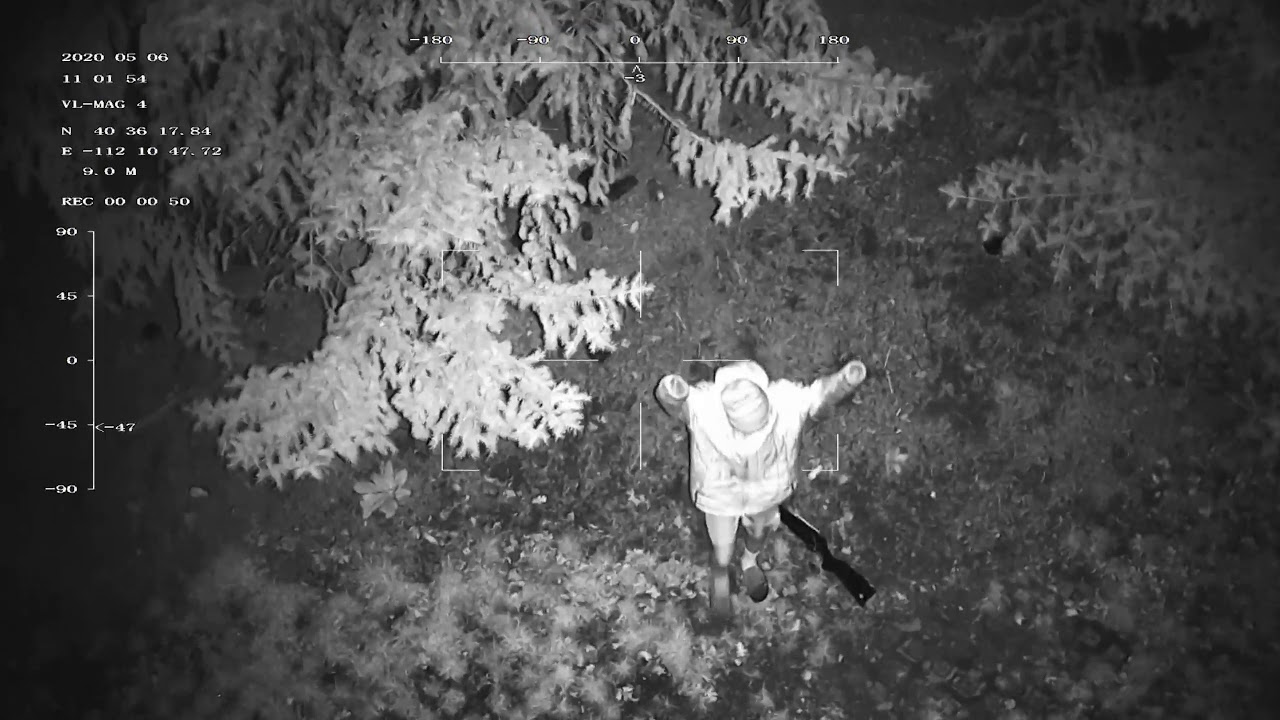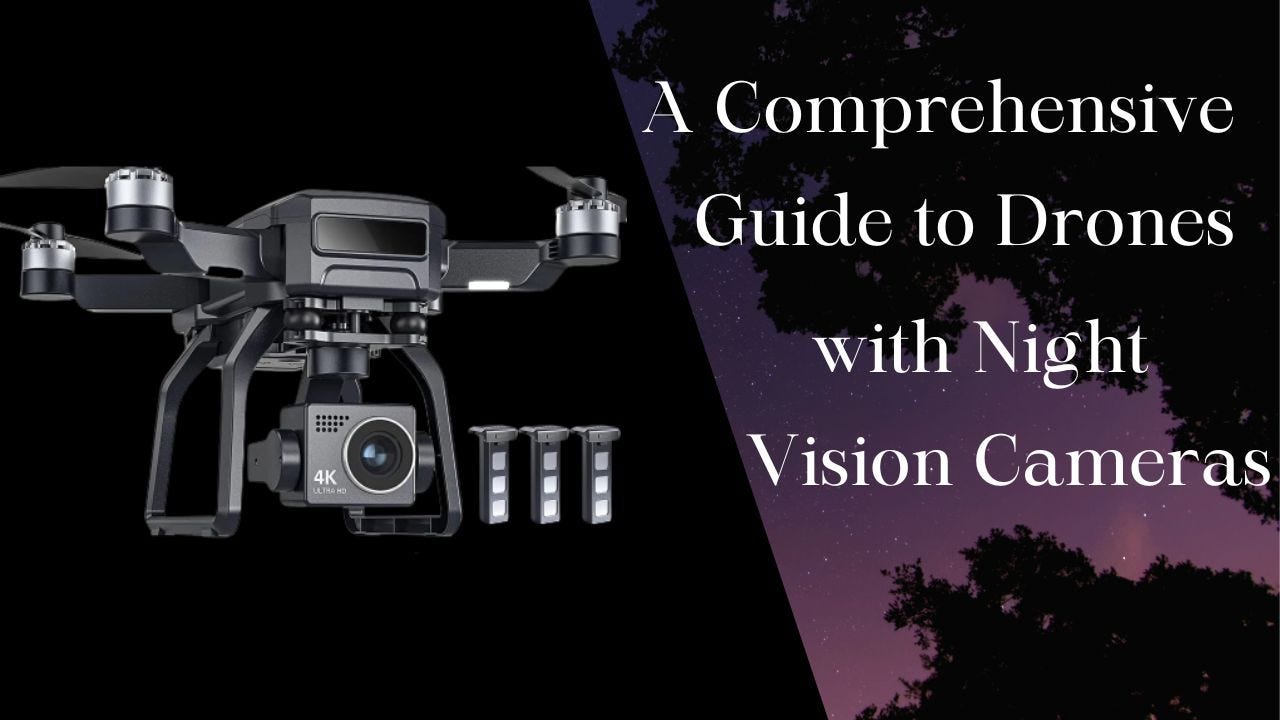
What is night vision camera drones with camera night vision, often referred to as NVCDs, are cutting-edge aerial devices that empower you to capture breathtaking moments in the darkest of hours. With their advanced night vision technology, these drones are designed to see in low-light and pitch-black conditions, providing a unique and thrilling perspective on the world after the sun sets.
These remarkable drones are equipped with infrared sensors and specialized imaging systems that amplify available light, allowing you to see and record in complete darkness. From covert surveillance to stunning astrophotography, night vision camera drones have become an invaluable tool across various industries. Dive into the world of NVCDs, and experience the magic of night vision technology as you embark on adventures that extend well beyond the boundaries of daylight.
What Is Night Vision?
Night vision is the ability to see in low-light or no-light conditions. It is a term that is often used to describe the ability of animals to see in the dark, but it can also refer to the use of night vision devices, which are optical devices that allow humans to see in low-light or no-light conditions.
There are two main types of night vision:
- Scotopic vision -is the natural ability of the human eye to see in low-light conditions. It is mediated by rod cells, which are more sensitive to light than cone cells, which are responsible for color vision. Rod cells are also more numerous than cone cells, so they are better at detecting low levels of light.
- Image intensification -is a technology that amplifies existing light, making it possible to see in low-light conditions. Night vision devices that use image intensification typically use a photocathode to convert incoming light into electrons, which are then amplified by a microchannel plate. The amplified electrons are then converted back into light by a phosphor screen.
Thermal imaging is another technology that can be used to see in low-light or no-light conditions. Thermal imaging devices detect the infrared radiation emitted by objects, which can be used to create an image of the environment, even in complete darkness.
Night vision has many applications, including:
- Military and law enforcement -Night vision devices are used by military and law enforcement personnel to navigate in low-light or no-light conditions and to identify targets.
- Security - Night vision devices are also used by security guards and other security personnel to monitor areas for potential threats.
- Wildlife observation -Night vision devices can be used to observe wildlife in their natural habitat, without disturbing them.
- Navigation -Night vision devices can be used to navigate in low-light or no-light conditions, such as when sailing or hiking at night.
How Do Night Vision Drones Work?
Night vision drones workby using one of three different technologies: low light cameras, infrared cameras, or thermal cameras.
Low Light Cameras
Low light cameras in drones typically use CMOS sensors, which are more sensitive to light than CCD sensors. They also have a wider aperture lens, which allows more light to reach the sensor. Additionally, low light cameras often use image stabilization technology to reduce blur caused by camera shake.
Low light cameras - are able to capture images in low-light conditions by using a combination of a high-sensitivity sensor and a wide aperture lens. This allows the camera to gather more light, resulting in brighter and clearer images.
Infrared Cameras
Infrared cameras in drones use special sensors that are sensitive to infrared radiation. These sensors convert the infrared radiation into an electrical signal, which is then converted into an image. Infrared cameras typically have a narrow field of view, which allows them to zoom in on objects in the distance.
Infrared cameras - work by detecting the infrared radiation emitted by objects. Infrared radiation is invisible to the human eye, but it can be detected by special sensors. This makes infrared cameras ideal for use in low-light or no-light conditions.
Thermal Cameras
Thermal cameras in drones use a microbolometer sensor to detect the temperature differences between objects. The microbolometer sensor is made up of a grid of tiny detectors, each of which is sensitive to a different temperature range. The thermal camera uses this information to create an image of the environment, where different temperatures are represented by different colors.
Thermal cameras -work by detecting the temperature differences between objects. Every object emits heat radiation, and the amount of heat radiation emitted is proportional to the object's temperature. Thermal cameras can use this information to create an image of the environment, even in complete darkness.
Can You Fly A Regular Drone At Night?
Yes, you can fly a regular drone at night, but there are some restrictions and safety guidelines that you need to follow.
Restrictions
- Recreational drone pilots -must have their drone equipped with anti-collision lighting that is visible for at least three statute miles.
- Commercial drone pilots -must have their drone equipped with anti-collision lighting and must also complete an initial knowledge test or training.
Safety Guidelines
- Only fly in well-lit areas.
- Avoid flying over people or crowds.
- Be aware of your surroundings and avoid obstacles.
- Maintain visual line of sight with your drone at all times.
- Fly below 400 feet above ground level.
- Do not fly in controlled airspace without permission.
It is also important to note that some cities and municipalities have their own regulations regarding drone flights. Be sure to check the local regulations before flying your drone at night.
Here are some additional tips for flying a drone safely at night:
- Use a spotter to help you keep track of your drone.
- Use a drone landing pad to make it easier to land your drone in low-light conditions.
- Be aware of the effects of wind on your drone. Wind can be more difficult to see at night, so it is important to be extra cautious.
- Be prepared for battery life to be shorter in cold weather.
Why We Need Night Vision Camera Drones?
Night vision camera drones serve several important purposes and offer unique advantages that make them an essential tool in various fields. Here are some reasons why we need night vision camera drones:
- Enhanced Surveillance and Security - Night vision camera drones are crucial for enhancing security measures. They can be used to monitor properties, critical infrastructure, and large areas during the nighttime hours. Whether it's keeping an eye on a residential property, a corporate campus, or a border area, these drones provide an additional layer of protection, allowing security personnel to detect potential threats and respond swiftly.
- Wildlife Observation -Researchers, conservationists, and wildlife enthusiasts benefit from night vision camera drones to observe nocturnal animals without disturbing their natural behavior. This technology allows for the documentation of wildlife habits, aiding in research, conservation efforts, and providing breathtaking visuals of creatures in their element.
- Search and Rescue Operations -Night vision camera drones are invaluable in search and rescue missions, especially in low-light or nighttime conditions. They can cover a large area quickly, locating missing persons, accident victims, or stranded hikers. The ability to spot individuals in distress during the night can significantly increase the chances of successful rescues.
- Creative Photography and Filmmaking - Night vision camera drones have opened up new avenues for creative expression. Filmmakers and photographers can capture stunning nighttime scenes, astrophotography, and artistic visuals that were previously challenging to obtain. This technology offers a fresh perspective on the world, allowing for unique and captivating content.
- Agriculture and Infrastructure Inspections -In the agricultural sector, night vision camera drones assist in monitoring crops and livestock during the night, helping farmers manage their operations efficiently. In the field of infrastructure, these drones can inspect bridges, power lines, and pipelines, identifying issues or damage that might be hidden in the dark.
- Law Enforcement - Law enforcement agencies use night vision camera drones for surveillance and tracking in criminal investigations. They can gather critical evidence during nighttime operations while ensuring the safety of officers and the public.
- Recreational and Hobbyist Use -For hobbyists and drone enthusiasts, night vision camera drones provide an exciting way to explore the night sky and capture stunning visuals. From starry skies to cityscapes illuminated after dark, these drones offer endless recreational possibilities.
What Makes A Night Vision Drone Different From Other Drones?
The main difference between a night vision drone and other drones is the type of camera that is used. Night vision drones use one of three types of cameras: low light cameras, infrared cameras, or thermal cameras. These cameras allow the drone to see in low-light or no-light conditions.
Night vision drones are also often equipped with additional features that make them more suitable for night operations. For example, they may have brighter lights, longer battery life, and more powerful processors.
Here is a table that summarizes the key differences between night vision drones and other drones:
| Night vision drone | Other Drone |
| Low light, infrared, or thermal camera | Visible light camera |
| Brighter lights, longer battery life, more powerful processor | May or may not have these features |
What Can You Use Night Vision Drones For?
Night vision drones can be used for a variety of purposes, including:
- Safety and security -Night vision drones can be used to monitor areas for potential threats, such as intruders, wildfires, or natural disasters. They can also be used to search for missing persons or animals.
- Inspection and maintenance -Night vision drones can be used to inspect industrial facilities, power lines, and other infrastructure for damage or defects. They can also be used to monitor crop health and identify pests or diseases.
- Photography and videography - Night vision drones can be used to capture stunning images and videos of wildlife, landscapes, and other scenes in low-light or no-light conditions.
- Research and development -Night vision drones can be used to conduct research in a variety of fields, such as environmental science, wildlife biology, and agriculture.
- Fire departments -are using night vision drones to assess fire damage, monitor the spread of wildfires, and search for survivors.
- Search and rescue teams -are using night vision drones to locate lost hikers and climbers in remote areas.
- Farmers- are using night vision drones to monitor crop health, identify pests and diseases, and assess damage after storms or other natural disasters.
- Utility companies- are using night vision drones to inspect power lines and other infrastructure for damage.
- Wildlife biologists -are using night vision drones to study nocturnal animals and their behavior.
- Environmental scientists- are using night vision drones to monitor pollution levels and track the movement of invasive species.
Which Drone With Night Vision Is The Best?
Desire to operate your drone after dark? Certain drones designed for night surveillance have excellent features or specifications that enable them to record footage of the night sky with precision. Typically, they make use of thermal and infrared imaging technologies.
1. Long-range Drone With Night Vision - JOUAV CW-30E
The JOUAV CW-30E is a long-range night vision drone that combines a radiometric thermal camera for night vision, a laser rangefinder with a detection range of 50–4000 meters, and a 1920 × 1080 pixel zoom camera with 30x optical and 2x digital zoom.
In addition to being able to take off and land in any small space, including on a moving ship or vehicle like a multirotor, the CW-30E is a hybrid fixed-wing drone that can cover huge regions at the speed of a fixed-wing UAV. With a 200-kilometer range, 600 minutes of flight time, and a top speed of 90 km/h, the CW-30E long range drone is perfect for missions involving extensive area inspections.
2 . The Best Thermal Night Vision Drone Is The CW-25DE.
This drone is entirely electric, producing no noise and emitting no carbon dioxide. After vertical takeoff to a predetermined height, the CW-25DE drone switches from vertical takeoff to fixed-wing mode by locking its loud propellers. It is a very quiet and covert substitute for conventional multi-rotor drones thanks to this clever design decision. Put another way, it's a quiet drone that soars through the heavens with elegance and delicacy.
3. JOUAV CW-25DE - A Drone With Night Vision That Is Silent
The JOUAV CW-25DE is optimized for nocturnal operations and is compatible with the MG-120E gimbal. This sensor comprises a 640*512 thermal sensor, a 3-axis gimbal stabilizer, and a visible light camera with a 30X zoom range. When combined, these hybrid payloads have the greatest potential for impact. You may significantly increase visibility in difficult and low-light situations by simultaneously magnifying the thermal and visual sensors on a split screen.
4. The Best Thermal Night Vision Drone - JOUAV CW-25D.
No matter how large the mission area is, the JOUAV CW-25D hybrid gas-powered drone can assure efficient surveillance with its 360-minute flying duration and 100km/h cruise speed. If you pair it with the MG-150E dual-sensor system, you may monitor a site after dark or conduct search and rescue operations by seeing what the human eye cannot. The MG-150E gimbal camera comes with a 640x512 px radiometric thermal camera, a laser range finder that can detect objects up to 4000 meters away, and a 30x zoom high-resolution camera.
5. Cheapest Night Vision Drone - JOUAV CW-15D
The least expensive night vision drone on this list is the JOUAV CW-15D, which can fly for 180 minutes and carry up to 3 kg of cargo. The CW-15D is a versatile and small camera with an integrated dual-sensor MG-120E, a 10.8-megapixel vision camera with a 30X visible magnification, and a high-definition 640 x 512 pixel thermal imaging camera.
FAQ's About What Is Night Vision Camera Drones With Camera Night Vision
What Are Drones With Cameras Used For?
Drone photography is used in surveillance to gain intelligence against enemy targets by government agencies in war and for competitive intelligence by businesses. It is used in journalism and also law enforcement, as well as spying.
What Are Drones Used For At Night?
There are many reasons why pilots will want to fly their drones at night vs the daytime. Examples include hobbyist aerial photography/videography as well as professional aerial photography/cinematography.
Which Drone Is Best For Night Video?
Top 5 Best Drones for Night Photography
- DJI Mavic 3 Classic. Specifications. Sensor size. 4/3” CMOS. ...
- Autel Evo Lite+ Specifications. Sensor size. 1” CMOS. ...
- DJI Mini 3 Pro. Specifications. Sensor size. 1/1.3” CMOS. ...
- DJI Air 2S. Specifications. Sensor size. 1” CMOS. ...
- Autel Evo Nano Plus. Specifications. Sensor size. 1/1.28” CMOS.
Conclusion
In conclusion, night vision camera drones with camera night vision have revolutionized the way we perceive and interact with our surroundings during the nighttime hours. These innovative devices offer endless possibilities, from enhancing security to capturing captivating moments in low-light conditions. Their ability to see in the dark and reveal hidden details adds a layer of intrigue and excitement to various applications, making them an essential tool for professionals and a source of inspiration for enthusiasts.
As technology continues to advance, we can expect even more remarkable developments in the realm of night vision camera drones, further expanding their capabilities and potential. So, whether you're an adventurer, a wildlife enthusiast, a security expert, or simply a lover of breathtaking nighttime views, these drones offer a gateway to an unseen world that's waiting to be explored.


